Article
Medical Museums Bring American History to Life
Author(s):
Most people vacation to escape their work. Yet many physicians travel to learn more about their profession's past, and the doctors who went before them. North America's medical history museums more than satisfy that curiosity.
Photography by author.Most people who travel want to escape their work. That’s why they take vacations. Yet we have met many physicians who travel with medical curiosity. They are interested in their profession’s past and in those who went before them.
Even when we look at the big picture of medical history, we color it from the perspective of our own corner of medicine’s canvas. If so, perhaps a radiologist might be more interested in the excitement of Wilhelm Röentgen’s discovery of X-rays. Or a cardiologist, perhaps, might thrill to William Harvey’s discovery of the circulation of the blood. It’s all out there to be savored.
Some of historical medical locations abroad are hard to find, and language may be a problem when you get there. (You can take a tour with me of some of the more notable sites here.) That’s one of the reasons I’ve found the Smithsonian Institution, the Yale Medical Library and the Library of Medicine at Harvard so fascinating -- even if most of the most important exhibits they own had their origins in Europe.
The Smithsonian has Röentgen’s X-ray tubes on display to remind us of this unassuming man so shy that when he received the Nobel Prize in 1901, he declined to give the expected lecture. He was the most private of men, yet his great discovery exposed the most secret places of the body to the most inquisitive of minds. Röentgen was trained as an engineer, but spent most of his life studying subjects as diverse as polarized light in gases and physical compressibility in solids. In fact, he’s remembered by history for work completely outside his field, discoveries that led to the theory of electricity and the practicality of roentgenstrahlen, a new kind of ray. Within a year, more than 1,000 scientific papers had been published on this ray, surely one of the strangest discoveries in medicine.
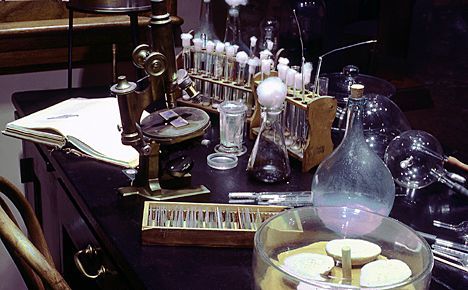
The Smithsonian, naturally, owns a lot more than Roentgen’s tubes. It has on show, for example, the desk of Abraham Flexner, the academic who legitimized medical education in America and “changed the face of American medical education.” He was working as a research scholar at the Carnegie Foundation for the Advancement of Teaching when he undertook the assessment of physician training in North America. After Flexner visited all 155 medical schools in operation in North America, his report on the subject in 1910 led to far-reaching reforms in the way doctors were trained. He also inspired his assistants. At his Institute for Advanced Study in Princeton, N.J., Flexner once answered a young assistant who asked what his duties were in a typical fashion: "You have no duties, only opportunities."
Flexner had other reflections on life. His comment “Probably, no nation is rich enough to pay for both war and civilization. We must make our choice; we cannot have both,” is a sobering thought.
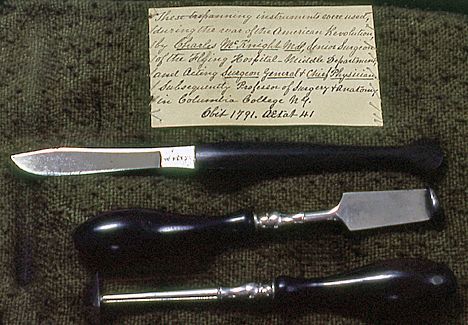
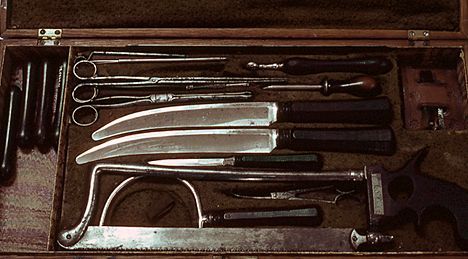
Equally sobering are the surgical instruments on display at the Smithsonian -- some from the Revolutionary War but many more from the Civil War. I felt a sense of reverence, as if I were in a church when I bent to photograph Röentgen’s X-ray tube in the public area, but when I was allowed into the vast “attic,” to walk among the Civil War surgical exhibits, I was overwhelmed to see how many there were in a room large enough to be an anatomy laboratory. All examples of what Robert Burns called, “Man’s inhumanity to man.”
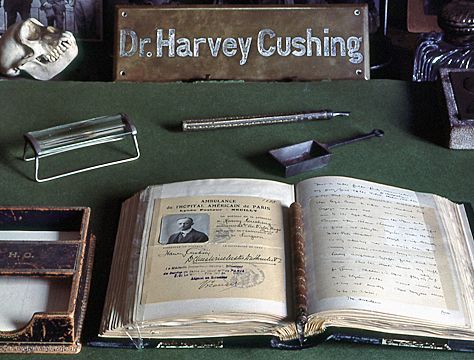
I couldn’t escape war even at the Yale Medical Library. Even in far-off Scotland’s Edinburgh Medical School we regarded Harvey Cushing as the greatest neurosurgeon of our century. And it was mesmerizing to be allowed by the curator at Yale to sit down at Cushing’s desk, and read his notebooks and diaries of when he served as a surgeon in the Great War. A captivating moment for even minor writers and photographers is the benefit, or perhaps the domino effect, from being published previously -- such a moment usually gives access to the next opportunity.
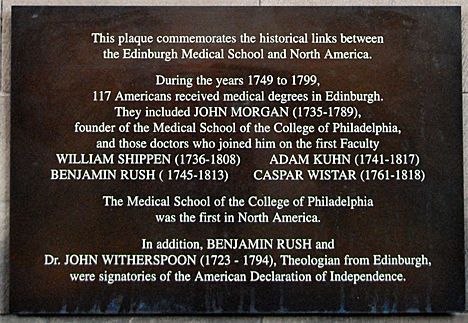
I’m reading at Cushing’s desk about this great man who had his surgical residency under another great man, William Stewart Halsted at Johns Hopkins University, and I’m thinking about the American-Edinburgh connection. A plaque on the wall at my old medical school reminds today’s students that between the years 1749 to 1799, a total of 117 Americans received medical degrees from Edinburgh. Among them were four (one was Benjamin Rush) who founded the Medical School at the College of Philadelphia, the first medical school in North America.

Cushing was a great reader. The medical library has his copy of Harvey’s treatise on the circulation of the blood, "De Motu Cordis." He was also was a skilled artist -- numerous illustrations in his diaries add the human touch to his writings. Among his most poignant notes, while he served in France in the Allied Expeditionary Forces, is his obvious angst at hearing Canadian physician Sir William Osler’s son had been seriously wounded in the third Battle of Ypres in Belgium in 1917. (My own father survived that battle -- it had half a million casualties on all sides -- but young Osler did not.) Harvey Cushing had been Osler’s neighbor on the East Coast, as well as a close friend. Cushing commandeered an ambulance and rushed to the battlefield, but his haste was in vain. He was overwhelmed with this sense of loss in this “war to end all wars.”
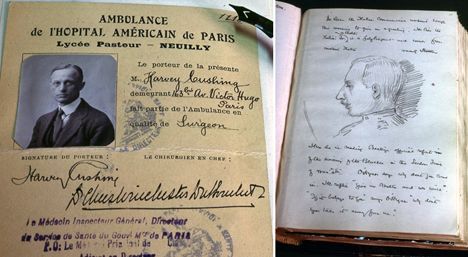
Pioneering polio researcher Albert Sabin, who received a medical degree from New York University in 1931, also went to war. He served in Europe and in the Pacific, and on his return to Cincinnati fought, like Jonas Salk, the polio virus. Sabin’s contribution was to realize a virus that also lived in the intestines could be attacked via the alimentary canal. His mutant avirulent virus had to be an easier defense than Salk’s virus, which required injection, but was it safe? Sabin tested it on himself and some co-workers, then on hundreds of prisoners and national volunteers in Eastern Europe. The test subjects were more than willing to volunteer, such was the scourge of polio.
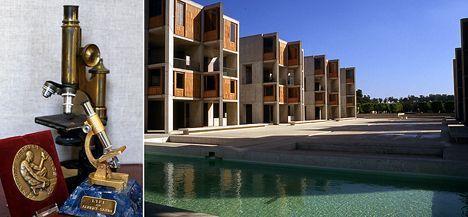
Sabin’s microscope is on display at the Museum of Natural History and Science at the Cincinnati Museum Center at Union Terminal. It sits there with the National Medal of Science Sabin was awarded in 1971. It’s a small exhibit compared to, say, the replicas of mammoths we typically see in natural history museums, but Sabin’s contribution to children’s health was monumental. Salk, his rival -- though that is hardly the correct word -- in the race to cure polio, has a much more impressive building, the award-winning Salk Institute in San Diego.
If I had to choose, however, the medical library that would win my award would be the Francis A. Countway Library of Medicine at Harvard University. I have always found its curators approachable and helpful. The Countway Library has many of the great books of medicine. I’ve worn white cotton gloves and explored ones that gave me a thrill to touch, from Osler’s personal copy of Andreas Vesalius’ “De humani corporis fabrica” to late 14th century vellum treatises that show the best phases of the moon for blood-letting.
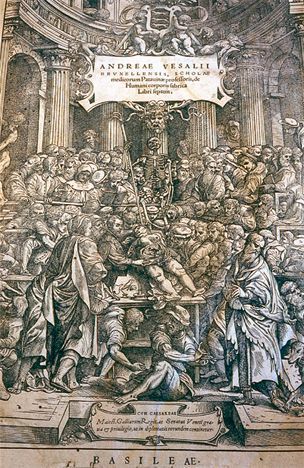
While in Boston, it’s relatively easy to get over to Massachusetts General Hospital, the third-oldest hospital in the U.S., to wonder at God’s gift to surgeons, the Ether Globe, and to think about “the day pain died” at Massachusetts General on Oct. 16, 1846. The globe itself sits in a glass cabinet, but now has been replaced by a replica. The room where John Collins Warren, the chief of surgery, operated on his patient with the help of local dentist, William Thomas Green Morton, is preserved as the Ether Dome. It was a glorious moment in American medicine, although the earlier work of Crawford Long in Georgia in 1842, seemingly forgotten, surely confuses the issue.
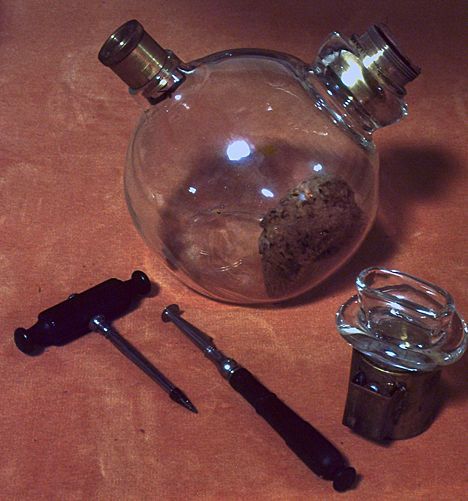
Medical advances have continued in our last century. The University of Toronto has placed a plaque on a wall to memorialize Frederick Banting and Charles Herbert Best, who discovered the medical use of insulin in 1922. Young students lounge below the sign, oblivious to its content and surprised, perhaps even amused, that a doctor like myself would come all the way from San Diego to photograph it. Banting, the physician, surely honored Best, his graduate student and lab assistant, by giving him half his Nobel Prize money. Banting and J.J.R. Macleod, the professor of physiology who had provided lab space in Toronto, received the Nobel Prize in 1923.
It’s less than 200 miles to Cleveland, where other 20th century medical artifacts await a visitor’s inspection. The Dittrick Museum of Medical History contains the second oldest electrocardiogram in the U.S. It was made in 1920 by the Cambridge Instrument Co. of New York, and is considered an advance on the string galvanometer developed by Dutch doctor Willem Einthoven for which, in 1924, he received the Nobel Prize. (Beside the EKG image is the 1967 artificial heart on display at the Cleveland Clinic Foundation.)

John Collins Warren, the chief surgeon at Massachusetts General, saw the benefits of ether, but he also saw his future -- and was impressed. “Gentlemen, this is no humbug,” he told those watching. What of our future? The days are over when incredible medical discoveries are made by penniless scientists working in uncomfortable attics with inadequate or primitive equipment. Now high-tech innovations require teams of researchers and huge sums of money. Maybe future medical writers will look back on our times in surprise at our ignorance and -- if we are lucky -- merely smile at our innocence.
Eric Anderson, who lives in San Diego, is one of the resident travel & cruise columnists for Physician's Money Digest. Eric a retired MD, and the one-time president of the New Hampshire Academy of Family Practice. He is also the only physician in the American Society of Travel Writers. Eric has written five books, the most recent called The Man Who Cried Orange: Stories from a Doctor's Life.




